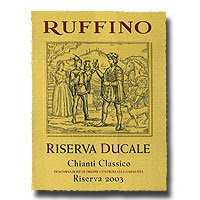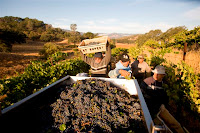
Sipping this red, red wine I can't help but sing out the lyrics of the infamous UB40 song in my head! !
Chappellet Winery has a long tradition of making superb Napa Valley Cabs. The Chappellet family began making wine in Napa from their Pritchard Hill winery in 1967... the second winery to be established in Napa since Prohibition!!!
When they started, the Chappellet vision was to create world class wines that would have the same depth and complexity as some of the finest Bordeaux wines. Instead of settling on the valley floor, they decided to plant vines on the rocky mountain slopes on the eastern face of the California valley. There, the family farms 34 distinct vineyard blocks - each with a different soil type, elevation, sun exposure and clone of grape. Most blocks are kept separate for the entire wine-making process and only combined at the end in the final blend.
But they're not only doing interesting things on their estate, they're doing it with the Earth in mind. Ninety percent (yeah, 90%) of the estate is certified organic!!! Instead of using pesticides and synthetic chemicals, the winery uses a variety of natural methods including cover crops, bird boxes and natural compost (which they produce about 400,000 pounds annually). Their farming equipment is retrofitted to run on 50% bio-diesel and the only water the winery uses is the runoff that's captured and held in the winery's own reservoir.
Want more? In 2008, the winery installed 960 solar panels that produce 280,000 kilo-watt hours of electricity (aka - enough to power the entire winery). Over a 30-year period, that's the equivalent of planting 40,000 trees!
So, when you open a bottle of Chappellet wines, not only are you opening a great tasting bottle, you're also opening a bottle that was sustainably produced. That's a win-win situation, if I do say so myself, and all the more reason to go buy a few bottles!
2006 Chappellet Vineyard Cabernet Sauvignon SignatureUSA, California, Napa ValleyIt was a long week... a very long week. I was initially excited when I purchased this wine, so decided to pull the trigger even though I knew it was young. Yeah... mistake. The wine itself is very nice once it opens up. Since it didn't quote blossom the first night, I threw the entire wine-filled decanter in the fridge and sampled the second night... it was still tannic and closed.
However, it did show a lot of promise as I could experience its notes of blueberry, plum, coffee (espresso), cola and a hint of menthol. Needless to say there's definitley a lot going on here. Its tough to get past the tannins, but the plum and blueberry really shine. The tannins are harsh so this needs to sit. But once it does, this wine will really come around. This will easily become an excellent bottle of Napa Cab if you're patient enough to wait for it (unlike I - hey, everyone has a rough week here and there!) So if you have some space to lay a bottle or two down for 2 or more years, your patience will be greatly rewarded!!!
My take: Outstanding Price: $33/bottle


 With the economy still dominating the scoreboard against us, many will limit their social excursions this summer for sake of saving a few pennies. But it doesn't mean you have to sacrifice your fun. In fact, many (myself included) are adopting the new philosophy that "staying in is the new going out." So why not start a Wine Tasting Club in your neighborhood or among a group of co-workers? It's the perfect excuse to get something social on the calendar while limiting use of the wallet.
With the economy still dominating the scoreboard against us, many will limit their social excursions this summer for sake of saving a few pennies. But it doesn't mean you have to sacrifice your fun. In fact, many (myself included) are adopting the new philosophy that "staying in is the new going out." So why not start a Wine Tasting Club in your neighborhood or among a group of co-workers? It's the perfect excuse to get something social on the calendar while limiting use of the wallet. 












